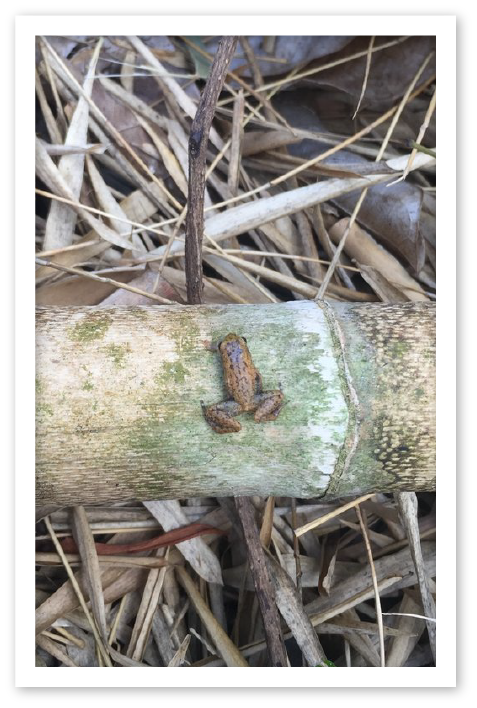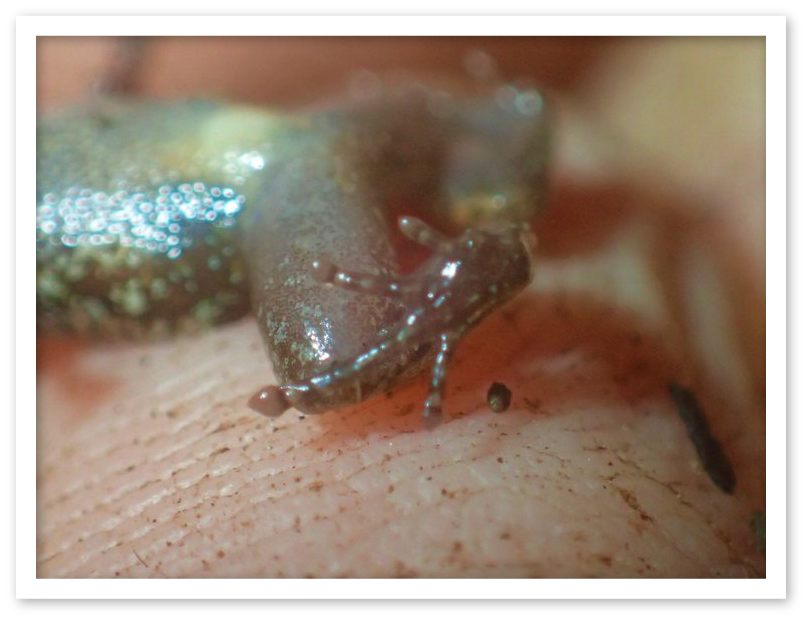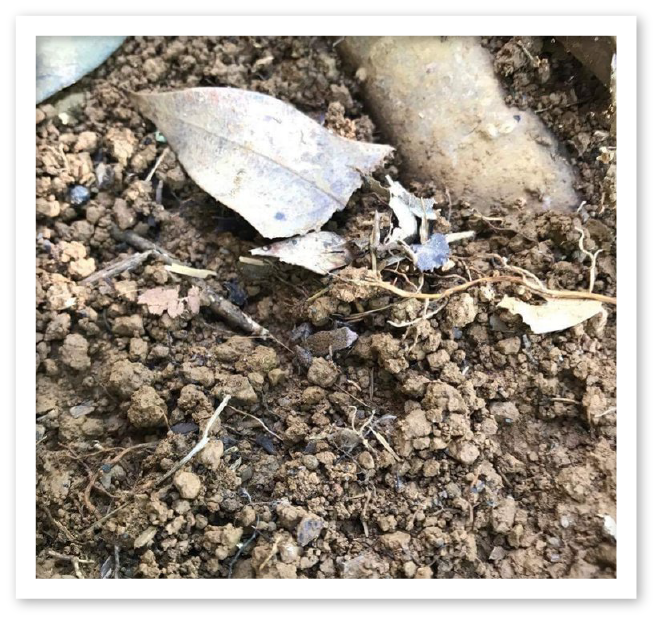Andoany Stump-Toed Frog
Author: Angus Hamilton
In the Throes of Pygmy Toes
My favourite thing about working on Nosy Komba was being able to head out into the forest and conduct herpetofauna (reptile and amphibian) surveys EVERY DAY. At 6:30 every morning, we would leave the comfort of camp and hike to one of MRCI’s 10 survey sites. Even at that time in the morning, the forests of Nosy Komba were teeming with life. We’d find an assortment of astonishing animals every walk: chameleons, geckos, snakes, frogs, birds, and lemurs, and that was before the survey!
In this post, I’m going to be talking about a couple of the teeny-tiny critters that we’d come across during these mornings hikes. But which ones? I’ll give you a hint: they were the stump-toed stars of our surveys!
One way MRCI determines herpetofauna species richness and abundance on the island is to conduct a plot survey. Plot surveys consist of four researchers slowly and methodically picking through the leaf litter in a line. The aim is to record all reptiles and amphibians within a seven by seven metre square, trying to make sure we’ve searched the entire area. This would normally take between thirty and forty minutes. We would note down the species, how big it was, and what substrate it was found on (tree, rock, leaf litter, etc), and all of this information goes into the research papers that ultimately inform conservation action!
We had to be super thorough during plot surveys, as it was at these times that we were most likely to see some of the smallest inhabitants of Nosy Komba. One tiny inhabitant that we always found in their leaf litter home was the Andoany stump-toed frog (Stumpffia pygmaea). It was incredible to see so many of these little guys hopping over your shoes! But what is it that makes these guys so special? Why were we so interested in these frogs?
The Andoany stump-toed frog is a really special little amphibian! For one thing, they are only found on Nosy Be and Nosy Komba but furthermore, they are also the seventh smallest frog in the world. These tiny frogs grow up to twelve millimetres long. Yes, you read that right. Twelve! If they only grow that big, I can barely imagine what the smallest frog in the world must look like in comparison! They are a part of the Microhylidae family, also known as the narrow-mouthed frogs. The narrow mouth of the S. pygmaea gives us an indication that it’s diet would consist of ants and termites, which it would find crawling through the leaf litter.
But more important than their size, these guys are also the first endangered species to be featured here on Life Gone Wild!
Surprisingly, considering their endangered status, S.pygmaea really weren’t difficult to come across on Nosy Komba. Whenever we conducted plot briefings, we always warned volunteers to look out for the Andoany stump-toed frog. These tiny brown amphibians were extraordinarily hard to spot in the leaf litter (great camoflauge huh?) and pretty damn fast. To give you an indication of just how common they could be sometimes, on one 45 minute survey we found twenty of these tiny frogs!
Now I know you’re thinking: If they ARE so common, then why are they endangered?! Stick with me, all will be revealed soon! First, we’re going to look at a cousin of the Andoany Stump-toed frog who also inhabits the leaf litter of Nosy Komba!
The Madagascar stump-toed frog (Stumpffia psologlossa) is a little larger than S.pygmaea, but only just! In fact, they grow barely a couple of millimetres more. Understandably, volunteers found it really tough to tell these tiny little guys apart! The major difference between them is that S.psologlossa is a lighter brown with black spots on its back! Just to make them that little bit more adorable, these spots can actually merge into the shape of a teddy bear! Now, the Madagascar stump-toed frog is also endangered and, similar to our tiny S.pygmaea, can be found on the islands of Nosy Be and Nosy Komba. However, it has also been recorded in two locations on the mainland. On our plot surveys, this little teddy-bear frog was another pretty common find.
Both of these species are called stump-toe frogs for a reason! If you check out the photo below, you can see what I mean! On their feet, they have three relatively normal sized toes with pads on the end. Then, on the inside of their foot they have a fourth toe which is half the size! Very little is known about about these tiny little guys, so unfortunately we don’t know much at all about why the stump-toe evolved, or what impact it has on them. I think it’s such a cool little evolution, and it seems to be unique to the Stumpffia genus of frogs.
Both of the Stumpffia species found on Nosy Komba are leaf litter specialists. They spend almost their entire lives there. Amazingly, unlike many other frog species they reproduce on land and lay non-feeding tadpoles. Their tadpoles develop in foam or jelly nests until they are able to fend for themselves! While they are fairly adaptable little frogs, as with most malagasy wildlife, they are unable to withstand the ongoing threat of deforestation and habitat degradation.
It is now that we start to reach the central issues that these amazing little frogs face! Though they may be common on Nosy Komba and Nosy Be, they have a very restricted range. This leaves them vulnerable to extinction as a result of habitat degradation and fragmentation. If their habitat in the North-west is destroyed, they have nowhere else to go.
Both species are found in the leaf litter of primary and secondary forest. These forests are decreasing at an alarming rate of 0.55% a year! Agricultural expansion, logging for timber, charcoal production, and development of urban areas are the major activities responsible for this continuous degradation of natural forest, and are expected to have major impacts upon these tiny frogs. A rapid increase in the population of Madagascar (four-fold in the last 50 years) and poverty rates that exceed many other developing countries (90% of the population live on less than $2 a day) place increasing pressure on these environmental resources. Coupled with a distinct lack of political attention and legal protection of remaining primary and secondary forest (only 5% of forest is currently protected), land use change is expected to continue to the detriment of specialised species such as S.pygmaea and S.psologlossa.
Over time it will become increasingly clear just how much of an impact habitat degradation and fragmentation is having on species, not just in Madagascar but around the world. It’s an almost horrifying reality that as human populations continue to grow, animals that are specialists in their habitats (such as our little stump-toed frogs) will face increasing pressure. While not much is known about these tiny little guys, it is my hope that the work of conservation organisations, particularly on Nosy Be and Nosy Komba, will be able to ensure the survival of these amazing, tiny frogs.






